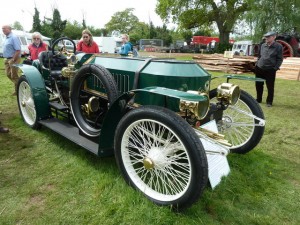Before car finance was even thought of, cars were powered by steam. Then Henry Ford came along and decided to use the good old petrol-driven, internal combustion engine and the rest, as they say, is history.
Since the 1920s the very idea of steam powered light vehicles has almost been considered laughable, however it’s really down to the amount of energy put into the development of the internal combustion engine that put this technology way ahead of steam.
In the early days it was not so cut and dried: in 1900 a steam powered car held the world land speed record. The biggest challenge for steam powered cars even today is the weight of the boiler, which makes any steam powered vehicle much heavier than its petrol driven counterpart.
The actual steam engine itself (excluding the boiler) is lighter and smaller than an equivalent petrol engine and, due to the way the power is delivered, a steam engine does not need the complex transmission all modern cars have. Also, like electric vehicles, a steam powered car is a lot quieter than a petrol engined vehicle.
In modern times steam power has been investigated for vehicle prototypes by many people, including big manufacturers like GM, VW and Saab. Saab started developing a steam powered car in 1973 prompted by the oil crisis of that time. The project was code-named ULF and featured a 119kW steam engine about the same size as a car battery. It avoided a long startup time by using compressed air to power the car at start while a head of steam was built up by the steam engine.
When the project was cancelled the project head, Dr Ove Platell, set up a company to continue the work and developed a hybrid that used the exhaust heat from the petrol engine to power a small steam engine, which in turn reduced fuel consumption by 20%.
Fast forward to August 2009 and a group called the British Steam Car Challenge decided to take on the steam world land speed record set over 100 years prior (in fact the longest standing automotive speed record in the world). The 1906 record had been set at 225kmh (127 mph) by Fred Marriott in a Stanley Steamer. On August 26 2009 the grandson of Sir Malcolm Campbell, Don Wales, broke this record with an average speed of 237kmh (148 mph) at Edwards Airforce Base in California. In fact the new vehicle broke not just one, but five records:
- The International Record for an average measured mile at 139.843mph
- The International Record for an average measured kilometre at 148.308mph
- An American National Record for an average measured mile at 148.166mph
- An American National Record for an average measured kilometre at 148.308mph (Category A, Group X, Class 3)
- A Guinness World Record for a measured mile at 139.843mph
Not bad for outmoded technology! We have yet to see an application for a vehicle finance for a steam powered vehicle at Aussie Car Loans, but when it comes in we’ll be ready.
Image credit: Chris Allen




